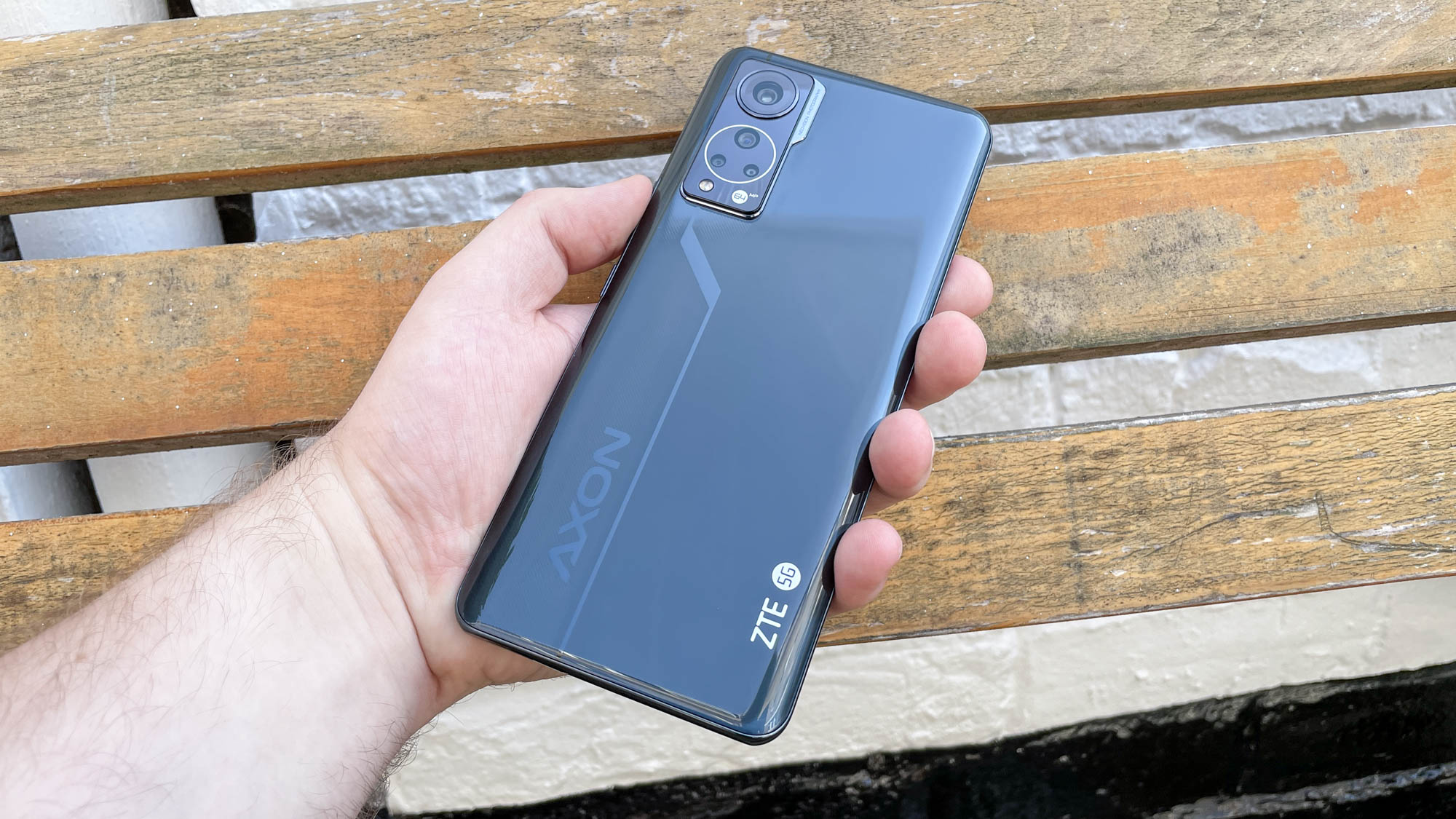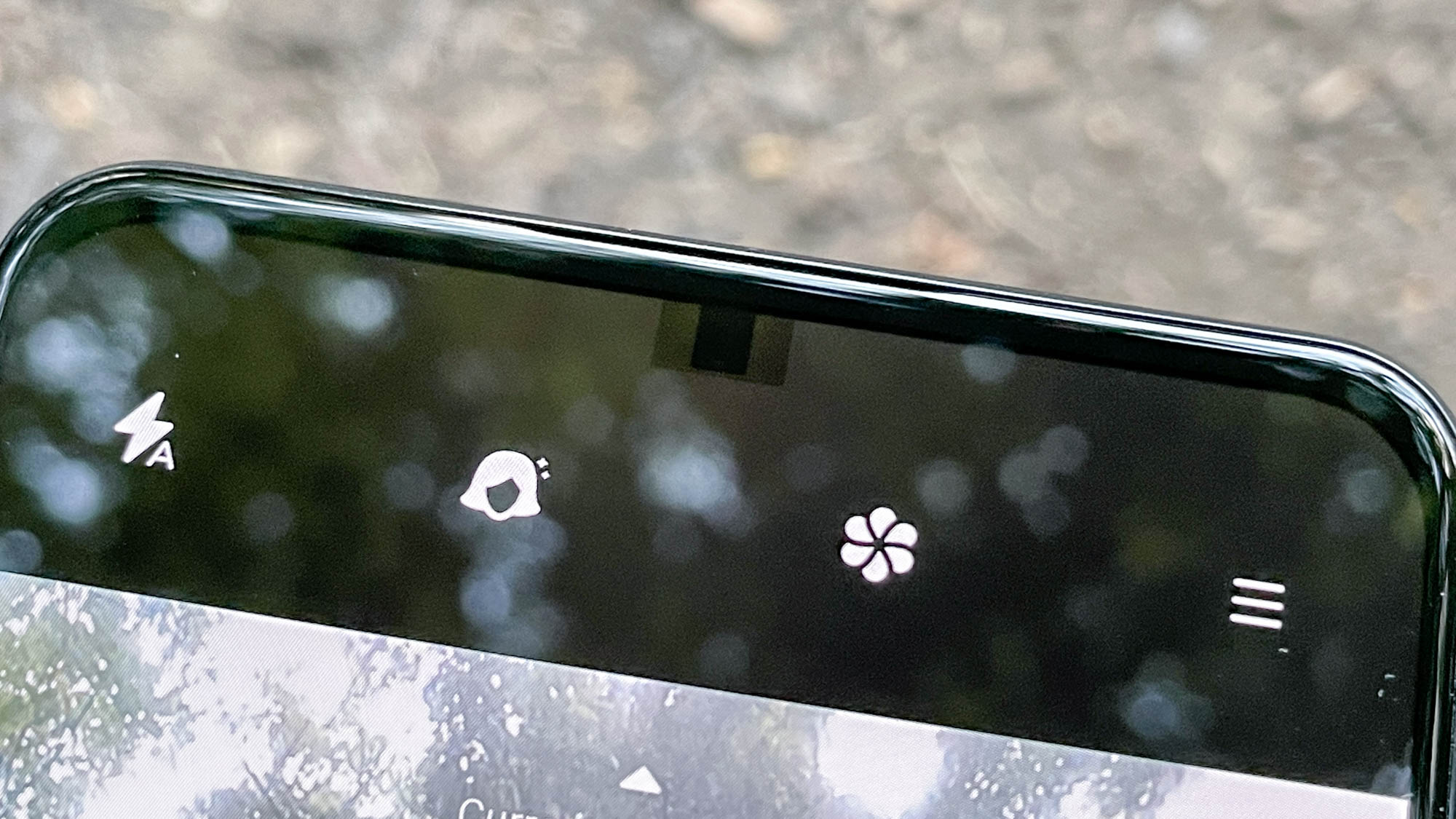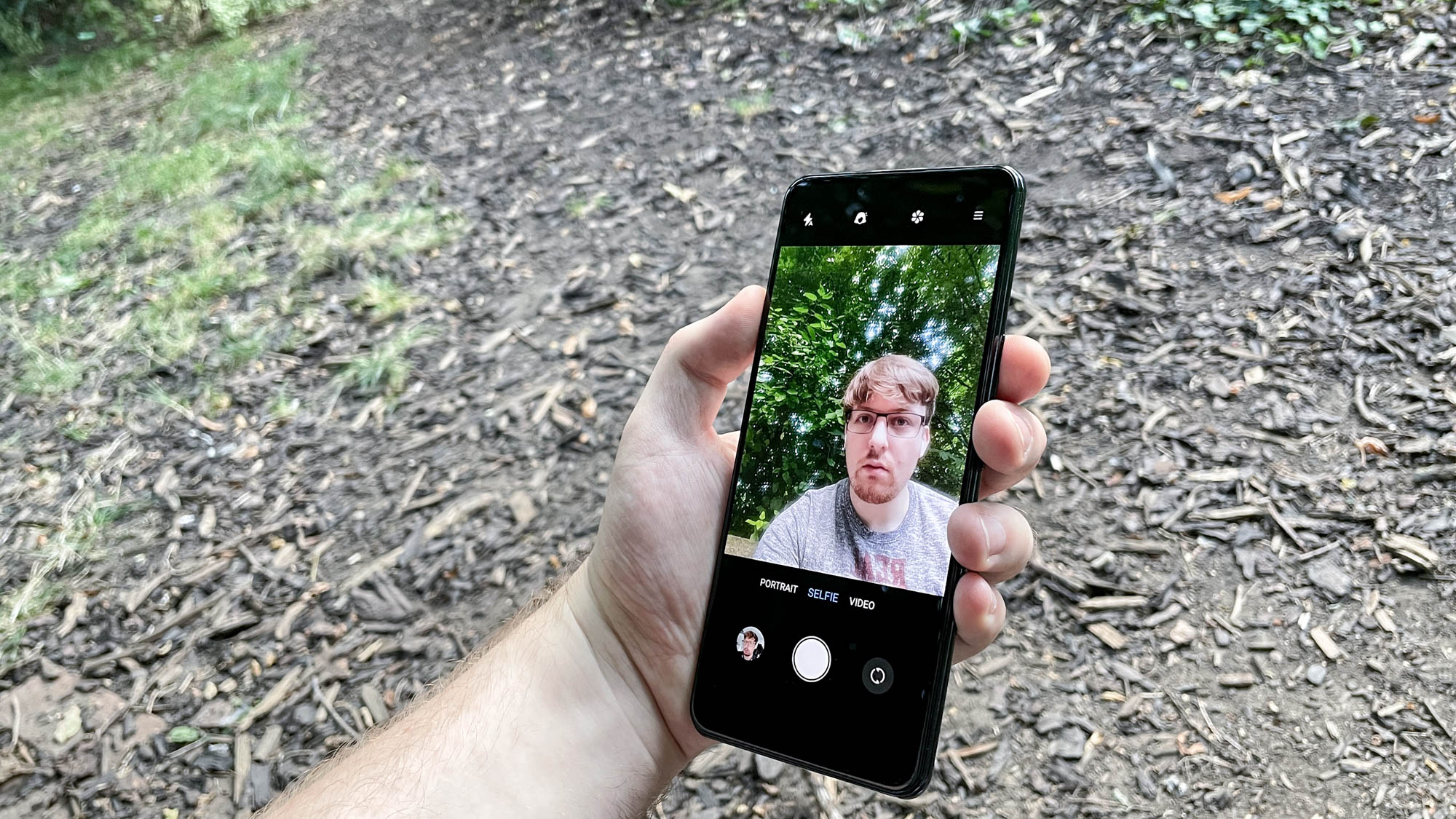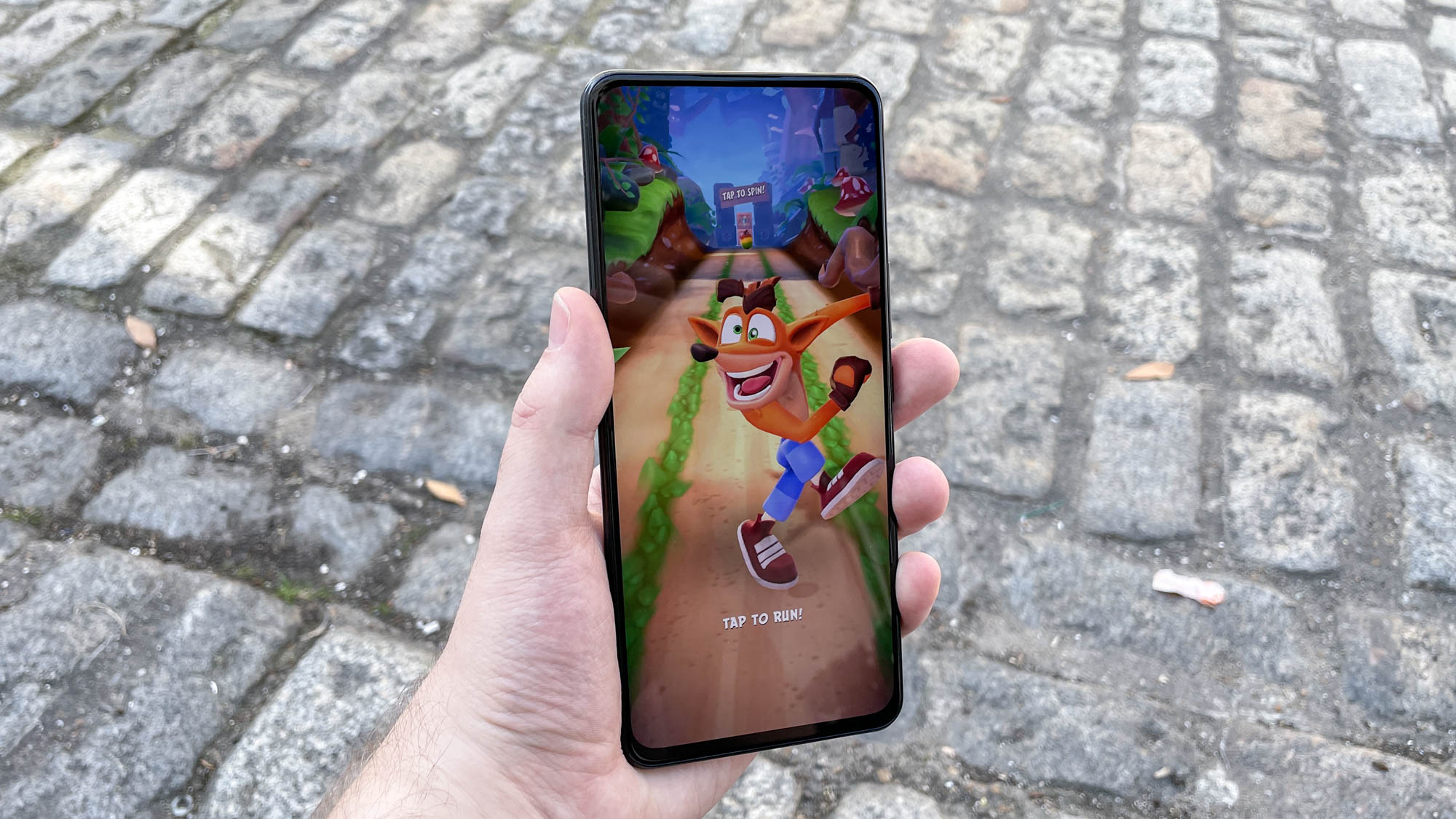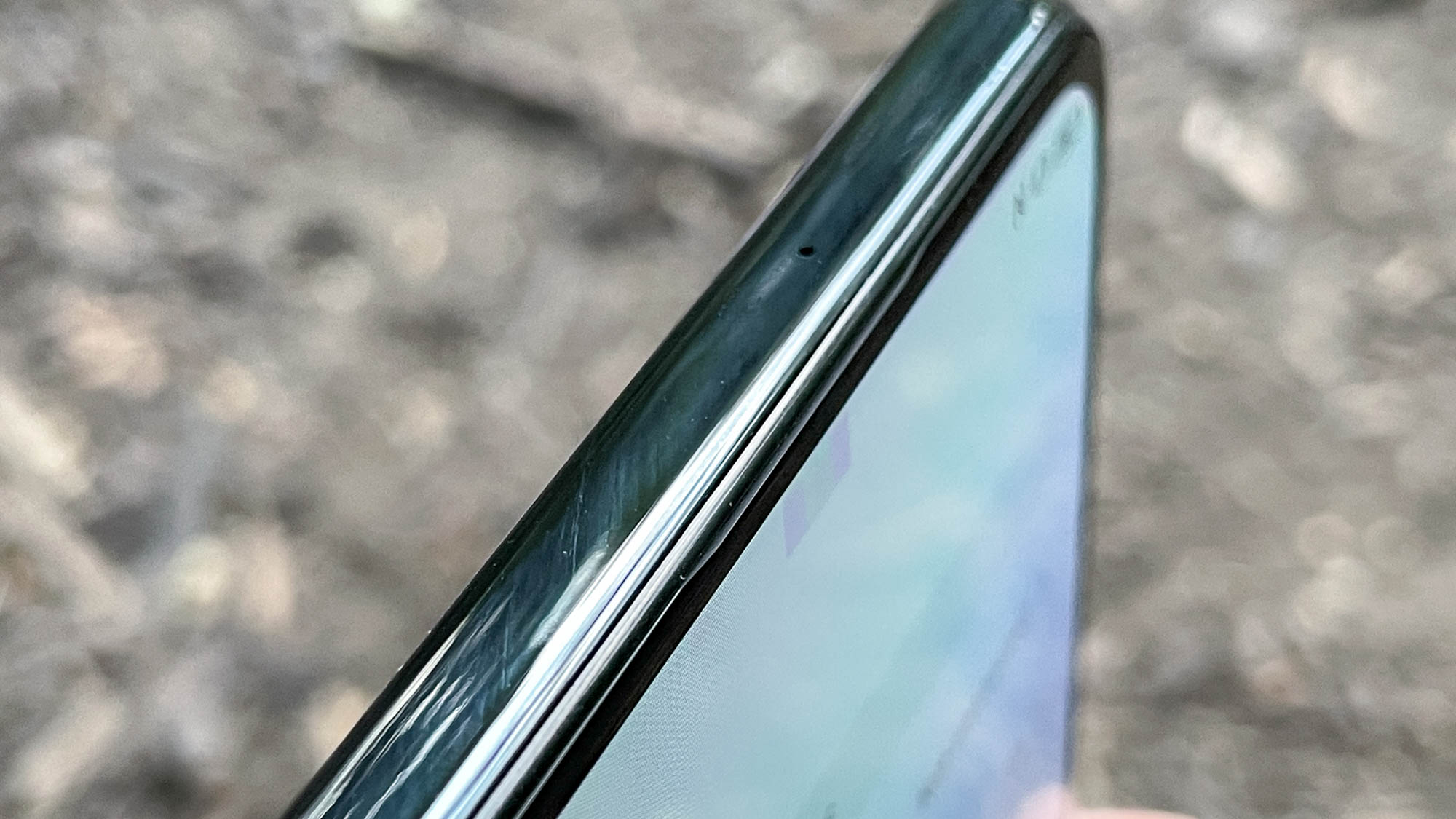Tom's Guide Verdict
While the ZTE Axon 30 5G offers the best under-display camera around, its other features don't stand out so much. If you want more than just a hi-tech party trick, get the Galaxy A52 or Pixel 5a instead.
Pros
- +
Under-display camera is much improved from ZTE Axon 20
- +
Huge, high-quality display
- +
Strong performance
- +
Decent battery life and charging speed
Cons
- -
Produces average photos at best
- -
Undersized battery
- -
Messy design
Why you can trust Tom's Guide
Starting price: $499/£429
OS: Android 11 with MyOS 11
Display: 6.92-inch FHD+
Refresh rate: 120Hz (adaptive)
CPU: Snapdragon 870
RAM: 8GB
Storage: 128GB
Rear cameras: 64MP main, 8MP ultrawide, 5MP macro, 2MP depth sensor
Front camera: 16MP (under display)
Battery: 4,200 mAh
Charging: 65W wired
Size: 6.7 x 3.1 x 0.3 inches (170.2 x 77.8 x 7.8mm)
Weight: 6.7 ounces (189 grams)
Colors: Black, Aqua
While under-display cameras remain an oddity among the latest and greatest Android phones, the ZTE Axon 30 5G marks the company's second crack at getting the feature to work. And while there aren't many competitors to compare it to right now, ZTE looks to have set the standard for under-screen sensors for the time being.
Once you look past the disappearing selfie camera, the phone that remains is still an impressive one. Sitting at the more expensive side of mid-range phones, the Axon 30 boasts a huge display, a strong chipset and rapid charging. But the rougher sides of the Axon 30 experience — its undersized battery, divisive design and disappointing photos — should give you pause if you're thinking about a purchase.
This ZTE Axon 30 5G review will explain why you may not want to give into temptation with this phone. Yes, its invisible camera is a visually impressive feature and can be yours for a fraction of the price of a phone like the Samsung Galaxy Z Fold 3. However if you want more than a fancy front camera, you may find your needs are better catered to by other excellent phones in this price range.
ZTE Axon 30 5G review: Price and availability
You can buy your own Axon 30 5G from September 9, with prices starting at $499/£429 for the 8GB RAM/128GB storage version, and RISING to £519 for the 12GB/256GB edition. You can buy the phone directly from ZTE, or from Amazon once sales go live.
At this price, the Axon 30 5G is a touch too expensive to be one of our best cheap phones. However it is still a legitimate competitor for the Google Pixel 5a (or Pixel 4a 5G for U.K. readers), the Samsung Galaxy A52 5G or the more expensive 12GB/256GB variant of the OnePlus Nord 2.
ZTE Axon 30 5G review: Design
Staring at the ZTE Axon 30’s 6.9-inch display, you'll struggle to find a bigger screen on a phone this year, especially at the price. You'll also struggle to find the front camera, since this phone's most prominent feature is somewhat ironically its disappearing under-display camera, which makes the front of the phone an elegant uninterrupted sheet of flat glass. Only Samsung’s Galaxy Z Fold 3 also sports such a feature at this point, and it’s more than three times the cost of Samsung’s foldable.
Turning the phone over reveals a messy set of design elements on the ZTE Axon 30’s curved back. You have a choice of either black or aqua colors, which are by themselves fairly classy, glossy hues. However ZTE added a pearlescent effect, as well as the phone's name and a diagonal texture beneath the glass, which is too much for my liking. And it only gets worse after you've been holding the phone for a little bit, as that gloss finish insists on picking up every fingerprint and speck of dust it's exposed to.
Get instant access to breaking news, the hottest reviews, great deals and helpful tips.
Also contributing to this visual clutter is the Axon 30’s camera block. The circles-within-circles design looks different from most other Android phone camera bumps, but also features a weird mix of textures. It approaches the level of visual distraction you'd find on gaming phones, although ZTE fortunately stopped short of adding RGB lighting.
ZTE Axon 30 5G review: Under-display camera
Let's address the signature feature of the ZTE Axon 30 5G before anything else. Beneath a small rectangle of pixels in the top center of the display sits a 16MP camera. As this is ZTE's second attempt at this type of camera (the first being last year's ZTE Axon 20 5G), there have been quite a few improvements, including new transparent display materials, larger sensor pixels, a higher pixel density in the display and improved photography algorithms.
But how good are the pictures this camera produces? ZTE is being realistic, warning you not to expect photos up to the standard of conventional selfie cameras. That said, the images produced by the Axon 30’s UDC are much better than last year's Axon handset, and should be much better than the tiny 4MP camera under the display of the Galaxy Z Fold 3. Stay tuned for a more detailed comparison between these two cameras.
For now, I compared the selfie cam on the ZTE Axon 30 to the Samsung Galaxy A52 5G, a similarly priced phone from a much bigger competitor. The clarity of the ZTE image seems minimally affected, although in bright light, you start getting strange defects in the ZTE's image. It comes in the form of lost definition between the leaves in the background, but this can also take the form of distracting halos of light with more focussed light sources.
I wouldn't use the Axon 30’s front camera to take myself a long-overdue new profile picture for my social media accounts, but this sub-screen sensor works fine if you merely want serviceable selfies or need to make a video call.
ZTE Axon 30 5G review: Display
Let's move to the screen which that under-display camera is beneath. As we've mentioned, the ZTE AXon 30 5G offers a 6.9-inch panel — one of the largest you can buy right now. It's also got a 120Hz refresh rate and an FHD+ resolution, meaning the panel matches the stats of much more expensive phones such as the Samsung Galaxy S21, while still being larger.
I watched the trailer for Star Wars: Visions on both the ZTE Axon 30 and the Galaxy A52, and found that ZTE’s phone offers a more immersive experience, though the colors and strokes of the anime art-style come off better on the Samsung phone. The action seems sharper and the colors more vivid on the A52’s smaller display.
Fortunately the ZTE isn't let down by the display covering the front camera. You can notice the camera's rectangular recess most easily at an extreme angle and with an all-white background, but this isn't how you're going to normally use the phone. When you’re watching video or concentrating on the task at hand, the hidden lens is even more difficult to notice.
ZTE Axon 30 5G review: Rear cameras
The rest of the cameras on the ZTE Axon 30 5G aren’t nearly as big a deal as the under-display camera, but you do get four rear sensors. Sadly these are not all equally useful, but they do match up well to rival camera systems.
The quartet of Axon 30 sensors consists of a 64MP main camera, an 8MP ultrawide camera and a 5MP macro camera, backed up with a 2MP depth sensor. To try the Axon 30’s cameras out, I tested them against the Samsung Galaxy A52 5G.
The main cameras on both the ZTE and Samsung phones feature 64MP sensors, so it's perhaps unsurprising to see two similar shots of the Merchant Square Fan Bridge's signature counterweights. The grey of the painted metal looks deeper in the Samsung's image, which is as expected since highly saturated photos are a signature Samsung trait. It doesn't draw me any more to the Samsung's photo than the ZTE's though.
The two images in this ultrawide comparison look quite different because the two phones use slightly differing magnification. Ignoring how the lines of Paddington Station's roof don't quite match, this is a shot where I think the Axon 30 finally has an edge over the Samsung device. The Axon's image looks bright and natural, whereas the A52 has given the scene a strange green-yellow tinge.
I tried out a portrait shot of this statue to see how the depth sensors on both phones produce a bokeh effect. The Galaxy A52 5G is my favourite here, since it has a deeper blur and it brings out the colors in the metal of the statue much better than the Axon 30 manages.
Macro cameras on cheaper smartphone often produce dire quality images, but these two haven't turned out too badly. Picking a winner is hard though. The A52’s image has a better depth of field, keeping more of this red flower in focus. However the image's colors are overly saturated, while the Axon 30’s algorithm has kept the intensity of the colors in better balance.
ZTE Axon 30 5G review: Performance
The ZTE Axon 30 5G uses a Snapdragon 870 system-on-chip, a decently powerful chip for a phone at this price. This is accompanied by either 8GB of RAM in the base version or 12GB if you pay for the fancier version.
We ran the 8GB RAM Axon 30 through our usual battery of benchmarks, and found these specs resulted in surprisingly potent results. On the general performance Geekbench 5 test, the ZTE's results were a 976 on the single core test and a 3,150 on the multi-core test. Compared to the 786 and 2,757 scores of the OnePlus Nord 2, powered by a MediaTek Dimensity 1200-AI chip, and 637 and 1,866 of the Snapdragon 750G-backed Galaxy A52, the Axon 30 is far more powerful. ZTE’s phone still loses out to the 1,337 and 3,226 of the iPhone SE and its A13 Bionic chip, even though that chip is almost two years old.
Moving to 3DMark's Wild Life Unlimited graphics benchmark, the Axon 30 scored 4,230 points for an average framerate of 25.3 fps. That’s slightly better than the Nord 2's 4,185 and 25.1 fps, but still nowhere close to the iPhone SE's results of 8,000 and 47.9 fps. But if you're determined to stick to Android, it's hard to find more power for the price of the Axon 30.
I played a few rounds of Crash On The Run, which turned out to be a great experience on such a large and well-powered phone. Crash Bandicoot himself, the environment and the hazards all looked detailed and ran smoothly and responsively, thanks to the display's high refresh rate and touch sampling rate.
ZTE Axon 30 5G review: 5G
5G comes built in with the Axon 30's Snapdragon 870 chipset. The bad news is that it's the sub-6GHz flavor of 5G, which is more commonly supported but isn't as fast as the mmWave version used by mobile carriers like Verizon.
Having checked the available 5G bands on the Axon 30's NA model, it should work with T-Mobile and Verizon’s slower 5G bands. U.K. buyers needn't worry since all available 5G networks should be supported.
ZTE Axon 30 5G review: Battery and charging
Despite the size of the ZTE Axon 30 5G, it only contains a 4,200 mAh battery. Comparably-sized phones, like the Galaxy S21 Ultra, can have closer to 5,000 mAh of capacity, so it's a noticeable deficit. The new phone’s power pack is even slightly smaller than the Axon 20's battery, if only by 20mAh.
On my unofficial rundown test, playing a calming 10-hour aquarium video on YouTube at medium brightness and volume with the phone set to its maximum 120Hz refresh rate, it took 6 hours and 21 minutes for the battery to drop 50%. That's just a touch shorter than the OnePlus Nord 2 I tested recently (which lasted 6 hours and 33 minutes on the same test). Hopefully, it means you can easily get a day of intensive use out of the Axon 30 before needing to recharge it.
Somehow this annoys me more than if the Axon 30 had lasted for a shorter time. I don't know exactly why ZTE didn't fit a larger battery in the Axon 30, but I'd wager if it did, it would easily make it onto our best phone battery life list. Instead, this feels like wasted potential.
ZTE's been generous with the charging speed, though. You still get a charger in the box, something you actually have to confirm these days thanks to Apple and Samsung's influence. The charger you get is a powerful one too, offering 65W charging just like the OnePlus 9 and OnePlus 9 Pro.
The results of our charging test were a drained Axon 30 filling up to 49% in 15 minutes, 78% in 30 minutes and to 100% in 47 minutes. That's actually slower than the OnePlus Nord 2, despite the OnePlus phone featuring a slightly bigger 4,500 mAh battery. While filling your phone completely in under 50 minutes is not to be sniffed at, ZTE seems to need to put a bit more work into its charging tech if it wants to catch up with the best.
ZTE Axon 30 5G review: Software
Aside from the under-display camera, the software running on the ZTE Axon 30 5G is perhaps the most improved aspect of the phone since last year’s model. ZTE is using its revised MyOS Android skin, based on Android 11. It's far more pleasant to use than MiFavor, ZTE’s previous software which came on the Axon 20.
However, not much has really changed from the last time I tried a ZTE phone, the ZTE Axon 30 Ultra. The interface is clearly designed and looks welcoming with a focus on rounded-off menu elements and pastel colors. But ZTE still needs to do another pass over its Settings menu descriptions, where the descriptions read clumsily and may annoy users who aren't too familiar with the features being described.
ZTE Axon 30 5G review: Verdict
The ZTE Axon 30 5G is uniquely exciting because of its futuristic under-display camera and the phone’s unexpectedly good specs, combined with a fairly low price. Still, it's tricky to actually recommend the phone as a practical purchase.
You may want to go for the Axon 30 5G because of the large display and great performance, which makes it an excellent option for games. The phone’s charging and battery life do well also, but are not the best you can get for the money. The photography is about passable, but it isn't any better than its rivals, particularly when it comes to selfie quality.
The Axon 30 is a much better phone than the Axon 20 was, but unfortunately the competition has moved forward, too, as you can see with comparable phones from OnePlus and Samsung. At least the Axon 30 can still lay claim to having the best under-display camera on the market, especially when it costs about a third of the price of the other phone with the same feature.

Richard is based in London, covering news, reviews and how-tos for phones, tablets, gaming, and whatever else people need advice on. Following on from his MA in Magazine Journalism at the University of Sheffield, he's also written for WIRED U.K., The Register and Creative Bloq. When not at work, he's likely thinking about how to brew the perfect cup of specialty coffee.


